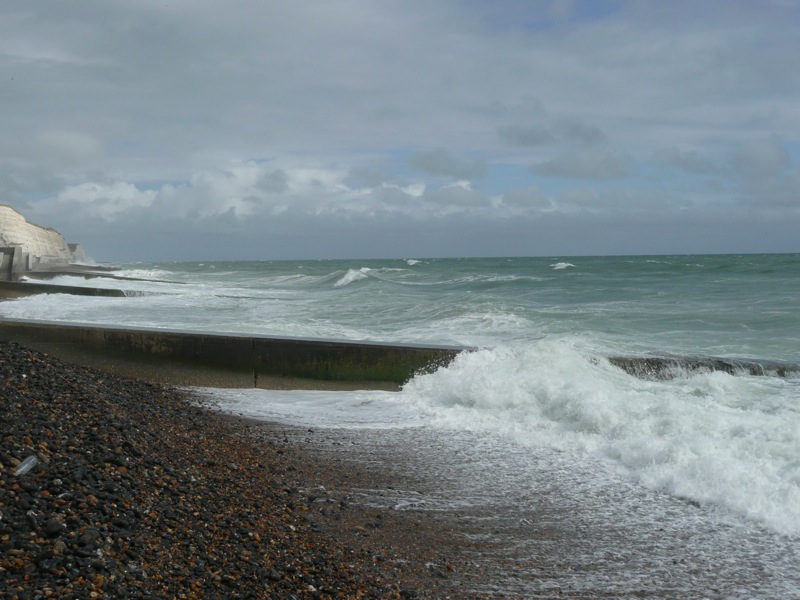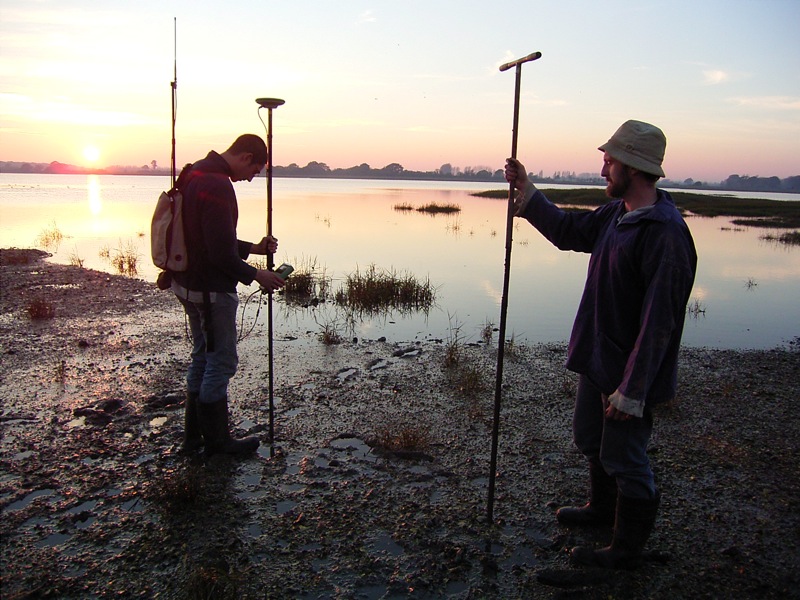 The effects of climate change, including rising sea level and coastal erosion, as well as other factors such as coastal development and shoreline management initiatives, constantly threaten archaeological sites along our coast. The destructive power of the sea is at its most visible during heavy storms when archaeological sites can be rapidly revealed or buried in thick sediment. However, steady change, such as the gradual erosion of the cliffs of Dover, can also bury, reveal or destroy archaeology. From 500,000 year old hand-axes to military aircraft lost during the Second World War, the archaeology of the coast of England is likely to represent every period and theme in archaeology.
The effects of climate change, including rising sea level and coastal erosion, as well as other factors such as coastal development and shoreline management initiatives, constantly threaten archaeological sites along our coast. The destructive power of the sea is at its most visible during heavy storms when archaeological sites can be rapidly revealed or buried in thick sediment. However, steady change, such as the gradual erosion of the cliffs of Dover, can also bury, reveal or destroy archaeology. From 500,000 year old hand-axes to military aircraft lost during the Second World War, the archaeology of the coast of England is likely to represent every period and theme in archaeology.A new study commissioned by English Heritage will examine archaeology along the south east coast of England, from Totton in Hampshire to Kingsgate in Kent. This Rapid Coastal Zone Assessment Survey, conducted by Wessex Archaeology, will produce a detailed review of archaeology on the coast, in order to determine the sites most at risk from the impacts of climate change. Coastal sites are particularly important, as some site types are unique while others exhibit levels of preservation not generally found in terrestrial equivalents. Data will be collated from the National Monuments Record, the relevant county and local Historic Environment Records and Sites and Monuments Records, along with various other local and national sources. As part of this assessment, tens of thousands of aerial photographs will be analysed, and visible archaeological sites will be digitised to contribute to the National Mapping Programme. Rapid Coastal Zone Assessment Surveys have already been undertaken in many other areas around the coast of the UK as part of a wider English Heritage initiative. While the South East is one of the last areas to be studied, English Heritage expects all of the archaeological surveys around the coast to be completed by 2013.
 An understanding of known sites will be combined with a review of coastal change from the end of the last ice age 12,000 years ago to the present in order to identify coastal areas with archaeological potential. Armed with this knowledge, archaeologists will review models of future coastal change to identify the archaeology at risk. The results of this study will provide a sound basis for developing management priorities, such as areas requiring further survey, and will be incorporated into Shoreline and Estuary Management Plans.
An understanding of known sites will be combined with a review of coastal change from the end of the last ice age 12,000 years ago to the present in order to identify coastal areas with archaeological potential. Armed with this knowledge, archaeologists will review models of future coastal change to identify the archaeology at risk. The results of this study will provide a sound basis for developing management priorities, such as areas requiring further survey, and will be incorporated into Shoreline and Estuary Management Plans.A project Liaison Group has been established to bring together representatives from stakeholder organisations, including English Heritage, the Environment Agency and the National Trust, as well as archaeologists from the Hampshire, East Sussex, West Sussex and Kent County Councils and the Southampton, Portsmouth and Chichester City Councils.
Read more about the Rapid Coastal Zone Assessment Survey of South East England.